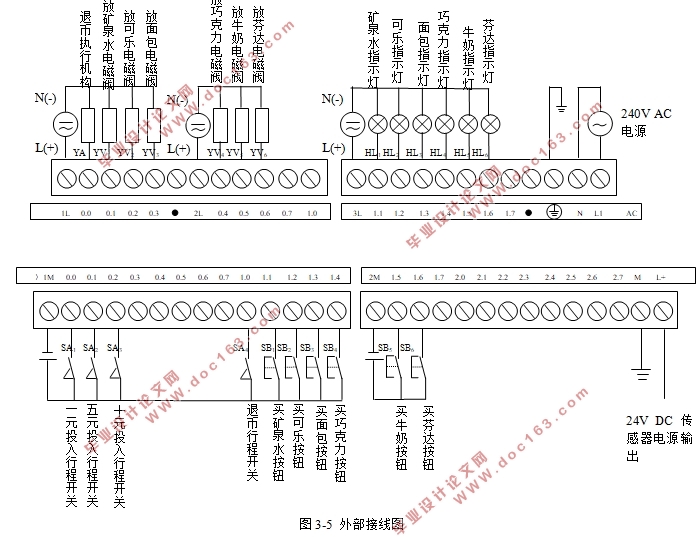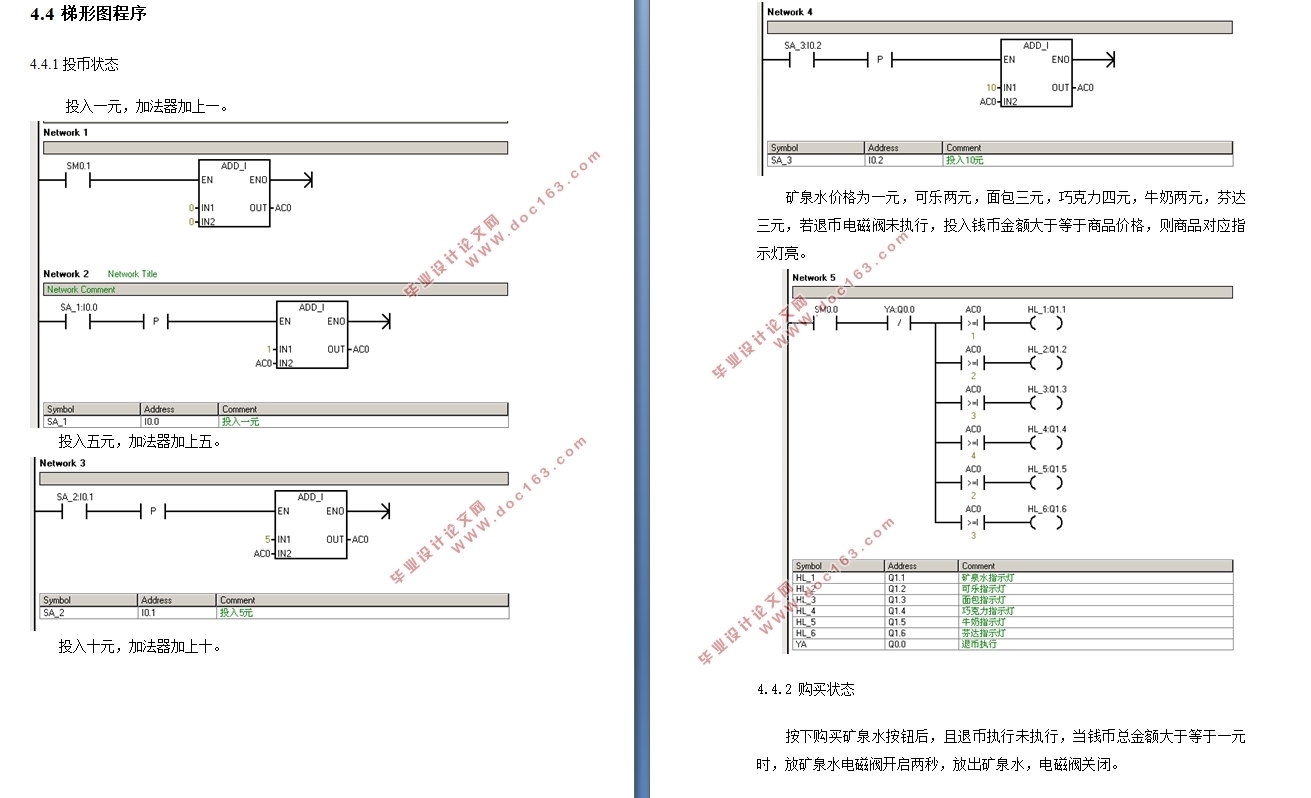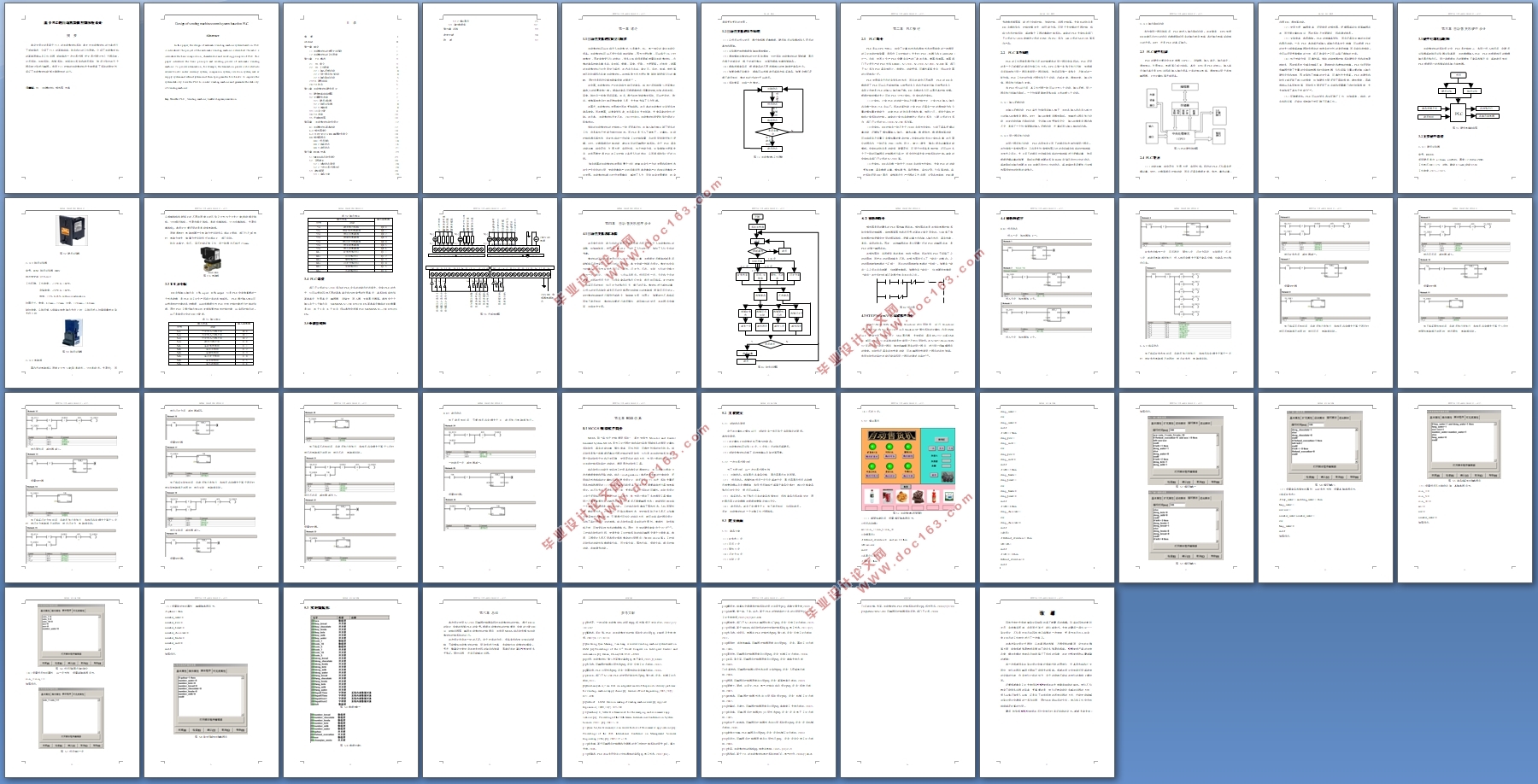基于PLC的自动售货机控制系统设计(附程序,S7-200)

1.无需注册登录,支付后按照提示操作即可获取该资料.
2.资料以网页介绍的为准,下载后不会有水印.资料仅供学习参考之用.
密 惠 保
基于PLC的自动售货机控制系统设计(附程序,S7-200)(任务书,开题报告,论文说明书9000字)
摘 要
本论文设计的是基于PLC的自动售货机系统,本文对自动售货机的方案进行了详细描述,介绍了PLC的基本组成、特点和它的工作原理。介绍了自动售货机的基本原理以及工作流程,详细描述一次交易过程,把交易过程分为几个程序块:计币系统、比较系统、选择系统、饮料供应系统和退币系统,然后分别对这五个程序块分别进行编程。利用PLC控制的自动售货机大大地提高了系统的稳定性,保证了自动售货机能够长期稳定的运行。
关键词:PLC 自动售货机 梯形图 仿真
Design of vending machine control system based on PLC
Abstract
In this paper, the design of automatic vending machine system based on PLC is introduced.The project of the automatic vending machine is described.The article introduces the basic composition, characteristics and working principles of PLC. This paper introduces the basic principle and working process of automatic vending machine. To process a transaction, for example, the transaction process is divided into several blocks: meter currency system, comparison system, selection system, water supply system and refund system.And then I program the five blocks. To improve the system stability I use the PLC to control vending machine and guarantee the stability of vending machines. [资料来源:www.THINK58.com]
Key Words: PLC ; Vending machine; Ladder diagram;simulation
[资料来源:THINK58.com]



目 录
摘 要 I
Abstract II
第一章 绪论 1
1.1自动售货机的发展史与现状 1
1.2自动售货机的工作原理 2
第二章 PLC概述 3
2.1 PLC简介 3 [资料来源:http://www.THINK58.com]
2.2 PLC工作原理 4
2.2.1 输入采样阶段 4
2.2.2 用户程序执行阶段 4
2.2.3 输出刷新阶段 5
2.3 PLC硬件组成 5
2.4 PLC特点 5
第三章 自动售货机硬件设计 7
3.1硬件电路组成框图 7
3.2主要硬件选型 7
3.2.1硬币识别器 7
3.2.2 纸币识别器 8
3.2.3 电磁阀 8
3.3 I/O点分配 9
3.4 PLC选型 10
3.5外部接线图 10
第四章 自动售货机软件设计 12
4.1自动售货机基本功能 12
4.2 梯形图简介 14
4.3 STEP7-Micro/WIN编程软件简介 14
4.4梯形图程序 14
4.4.1投币状态 14
4.4.2 购买状态 16
4.4.3 退币状态 21
第五章 MCGS仿真 23
5.1 MCGS组态软件简介 23
5.2 工程建立 24
5.2.1 试验状态假设 24
5.2.2 一次交易过程分析 24
5.3 建立画面 24
5.3.1 商品分类 24
5.3.2 窗口显示 25
5.3 实时数据库 32
第六章 总结 33
参考文献 34
致 谢 37
